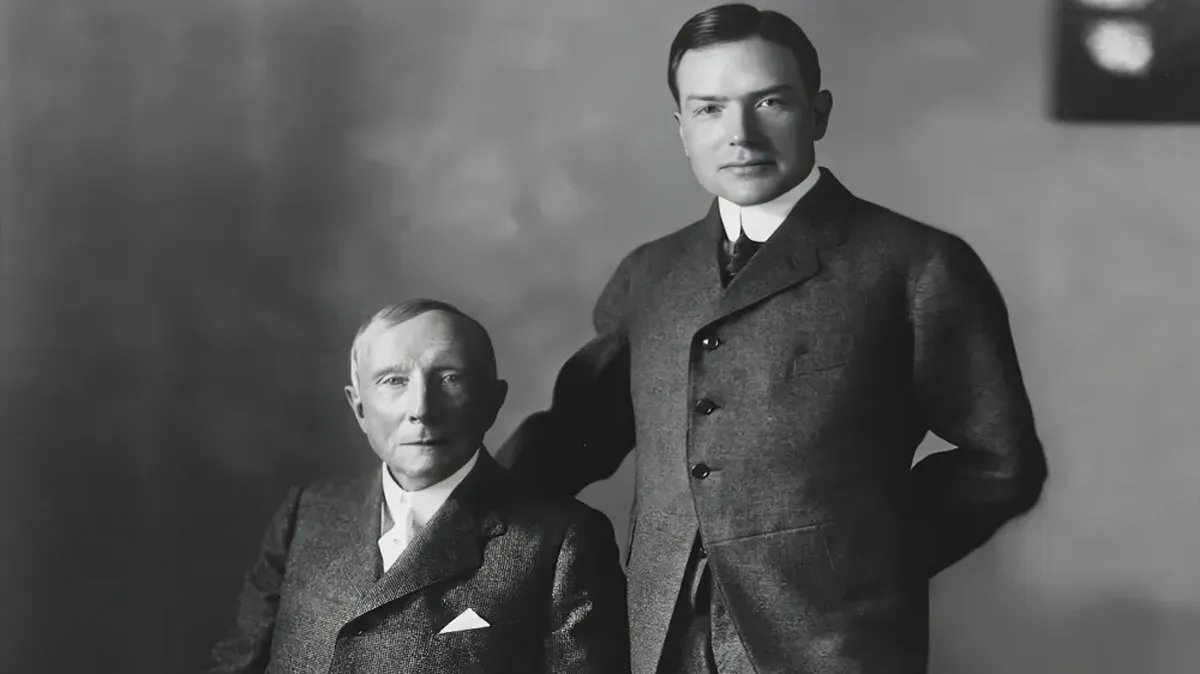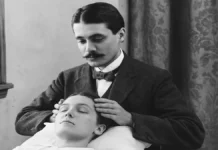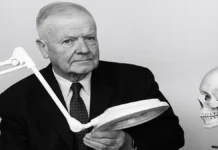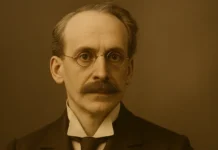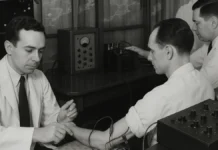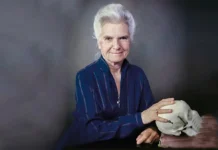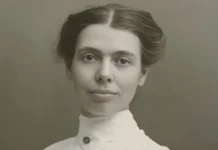Introduction
In the annals of American history, few names resonate as strongly as that of John D. Rockefeller. A giant of industry, a pioneer of philanthropy, and a man whose influence shaped the course of American capitalism. Yet beyond his business acumen and wealth, Rockefeller had a personal interest in a field far removed from the boardrooms of Standard Oil: osteopathy.
John D. Rockefeller, the titan of industry and renowned philanthropist, had a surprising connection to the world of medicine. Beyond his well-documented business ventures and charitable efforts, Rockefeller had a deep interest in a then-fringe medical field: osteopathy. This particular discipline, which emphasizes the body’s self-healing abilities through musculoskeletal manipulation, found in Rockefeller an unlikely champion. His influence, particularly through financial support, would prove pivotal in shaping the future of osteopathy in the United States.
This blog explores Rockefeller’s encounter with osteopathy and how his involvement transformed the nascent field. We’ll look at how his support propelled osteopathy from a fringe practice to a respected medical discipline, ultimately impacting the landscape of American health care.
John D. Rockefeller Sr: A Visionary Leader
John Davison Rockefeller Sr. (1839–1937) was more than just an American business magnate; he was a visionary whose impact reached far beyond the realm of industry. Born into modest beginnings in Richford, New York, Rockefeller’s ascent to becoming one of the wealthiest men in modern history was nothing short of meteoric.
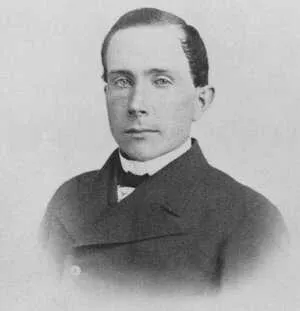
His business acumen and strategic vision laid the foundation for what would become the Standard Oil Company, a monopoly that controlled the majority of America’s oil refining and distribution during the late 19th and early 20th centuries.
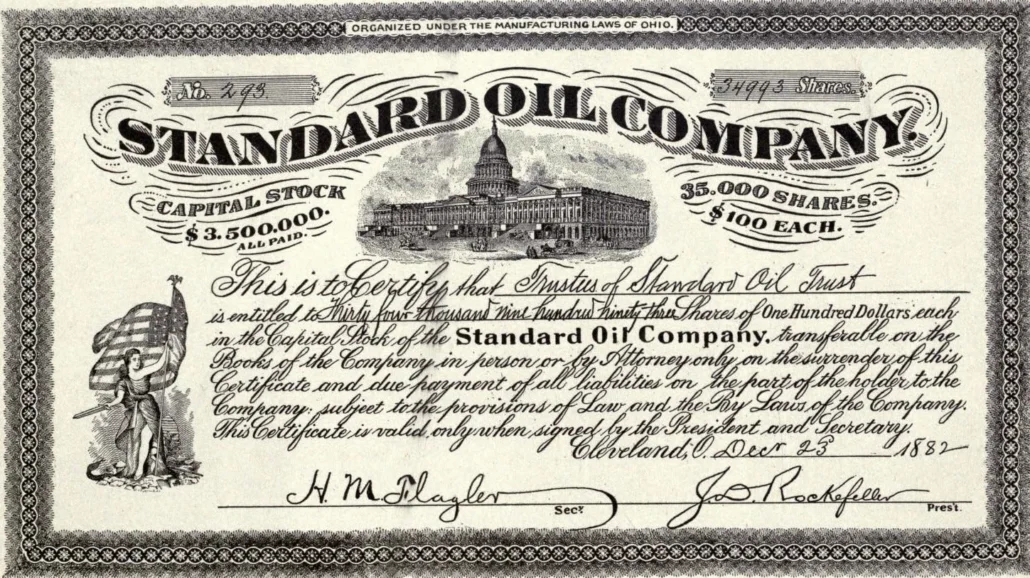
This 1882 share certificate symbolizes the power and influence of the Standard Oil Company, a key player in the industrial expansion of the United States. Established by John D. Rockefeller, the company was instrumental in shaping the global oil market.
Rockefeller’s journey from a modest upbringing to the pinnacle of wealth and power is a classic American success story. His early life was marked by financial struggle. His father, William Avery Rockefeller, was a traveling salesman who often left the family in precarious financial situations. Despite these challenges, young John demonstrated a remarkable aptitude for business from a young age. At the age of 16, he secured his first job as an assistant bookkeeper, where he quickly showcased his talent for numbers and financial management.
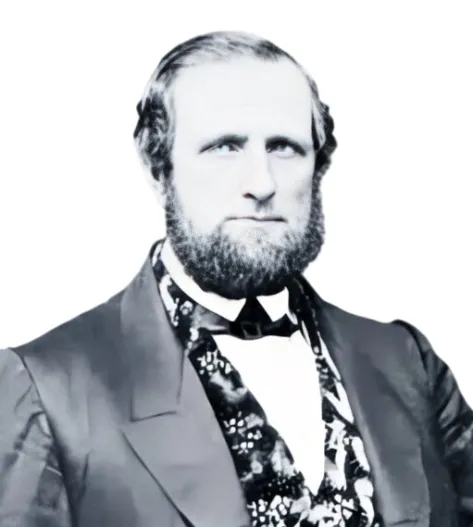
William Avery Rockefeller, also known as “Big Bill,” was an American businessman and the father of John D. Rockefeller, the founder of Standard Oil. Known for his colorful and often controversial lifestyle, he worked as a traveling salesman, selling various elixirs and remedies, and even posed as a doctor under the alias “Dr. William Levingston.” His entrepreneurial spirit and unconventional approach to business influenced his children, particularly John D., who became one of the wealthiest individuals in history. Despite his notoriety, William Avery Rockefeller remains a fascinating figure in the story of American industry and the Rockefeller dynasty.
In 1870, Rockefeller founded the Standard Oil Company, which would revolutionize the oil industry. Through a combination of strategic acquisitions, rigorous cost control, and innovative business practices, Rockefeller built Standard Oil into a dominant force. By the 1880s, Standard Oil controlled approximately 90% of the oil refining and distribution in the United States, making Rockefeller the wealthiest man in the world at that time.
Rockefeller’s influence extended well beyond the corporate world. He was a dedicated philanthropist who believed in the power of scientific research, education, and innovative approaches to medicine. His philanthropic endeavors were deeply rooted in his belief that wealth should be used to benefit society. This philosophy was exemplified by his creation of the Rockefeller Foundation in 1913, an institution dedicated to “promoting the well-being of mankind throughout the world.”

This historical photograph captures the Rockefeller Foundation’s field office in Brazil, highlighting its 20th-century global efforts to combat diseases. Established in 1913, the foundation became a pioneer in public health initiatives, particularly focusing on combating tropical diseases like yellow fever and malaria in South America. The group of professionals and researchers pictured here symbolize the Foundation’s commitment to improving public health through scientific research and international collaboration, which significantly impacted the health infrastructure and policies in the regions they served.The Rockefeller Foundation’s 20th-Century Global Fight Against Disease – Resource
It is in this latter aspect that Rockefeller’s connection to osteopathy emerges as particularly fascinating. His interest in medicine and healthcare reform was not merely academic; it was personal and profound. As he aged, Rockefeller faced various health challenges, prompting him to explore alternative medical treatments. This personal quest for better health solutions ultimately led him to osteopathy, a field that was still in its infancy but held great promise.
Rockefeller’s commitment to improving public health was evident in his support for numerous medical institutions and research initiatives. He was instrumental in the founding of the University of Chicago, the Rockefeller Institute for Medical Research (now Rockefeller University), and the Johns Hopkins School of Hygiene and Public Health. His funding supported groundbreaking research in medicine, public health, and the sciences, contributing to significant advancements in these fields.
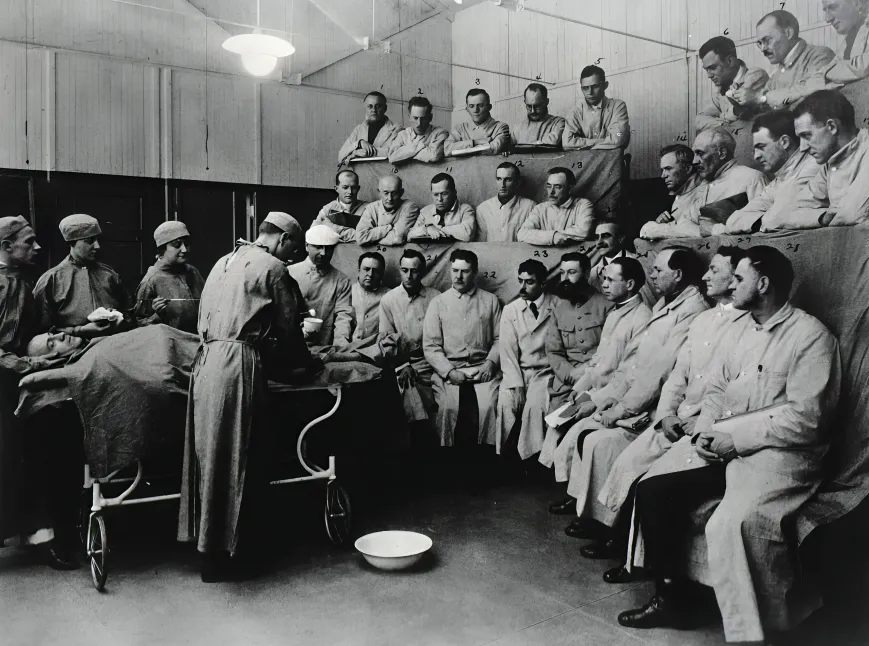
In this historic image, a surgical demonstration is taking place at the Rockefeller Institute for Medical Research, showcasing the institute’s commitment to advancing medical science through education and innovation. Founded in 1901, the Rockefeller Institute became a leading center for medical research and education, attracting some of the brightest minds in the field. The image reflects the meticulous approach to teaching and learning that defined the institute’s early contributions to modern medicine, emphasizing the importance of practical, hands-on training in the development of surgical techniques and medical knowledge.
The Rise of Osteopathy
The late 19th century was a time of medical innovation and experimentation in the United States. Traditional allopathic medicine dominated the field, relying on surgery, drugs, and other conventional methods to treat illness and disease. However, a new movement was quietly gaining momentum—an approach to healthcare that emphasized the body’s innate ability to heal itself through manual manipulation of the musculoskeletal system. This was osteopathy.
Founded by Andrew Taylor Still, an American physician and surgeon, osteopathy challenged the prevailing medical orthodoxy of its time. Dr. Still, disillusioned with the limitations and often harmful practices of conventional medicine, sought to develop a more holistic and effective approach to healing. He believed that many diseases were rooted in musculoskeletal problems and could be treated effectively through hands-on techniques. His holistic approach garnered attention and followers, leading to the establishment of the first school of osteopathic medicine in Kirksville, Missouri, in 1892.
Dr. Still’s philosophy was revolutionary. He posited that the human body possessed an intrinsic ability to heal itself and that this capacity could be enhanced through proper alignment and function of the musculoskeletal system. This approach was in stark contrast to the prevailing medical practices of the time, which often involved invasive surgeries and the use of toxic medications.
The core principles of osteopathy include the belief in the interrelationship between structure and function, the body’s inherent capacity for self-healing, and the importance of preventive medicine. Osteopaths, or DOs (Doctors of Osteopathy), use a range of manual techniques, known as osteopathic manipulative treatment (OMT), to diagnose, treat, and prevent illness. These techniques are designed to improve circulation, relieve pain, and enhance the body’s natural healing processes.
The early years of osteopathy were marked by struggle and resistance from the established medical community. However, Dr. Still’s unwavering commitment to his principles and the demonstrable success of his methods gradually won over patients and practitioners alike. The establishment of the American School of Osteopathy in Kirksville was a significant milestone, providing a formal education and training ground for future osteopaths.
Rockefeller’s Encounter with Osteopathy
It was during this period of medical ferment that John D. Rockefeller’s path intersected with the burgeoning field of osteopathy. Rockefeller, suffering from various health issues in his later years, sought relief from chronic ailments that traditional medicine had been unable to alleviate satisfactorily. It was at this juncture that he turned to osteopathy and its proponents.
In 1903, Rockefeller sought treatment from osteopathic physician Dr. Andrew H. Still Jr., the son of osteopathy’s founder. The results were reportedly transformative. Rockefeller, impressed by the effectiveness of osteopathic manipulation in addressing his health concerns, became a fervent supporter of the field. This marked the beginning of a relationship that would have profound implications for both Rockefeller and the future of osteopathic medicine.
Rockefeller’s health issues were not uncommon for someone of his age and lifestyle. He suffered from digestive problems, musculoskeletal pain, and general fatigue. Traditional medical treatments of the time offered little relief, leading Rockefeller to explore alternative therapies. His introduction to osteopathy provided a new perspective on health and wellness, one that resonated deeply with his personal experiences and beliefs.
Dr. Andrew H. Still Jr. employed a range of osteopathic techniques to address Rockefeller’s ailments. These included spinal adjustments, soft tissue manipulation, and other manual therapies designed to improve circulation, reduce inflammation, and restore balance to the body. Rockefeller found these treatments to be highly effective, leading to significant improvements in his overall health and well-being.
Impact of Rockefeller’s Support on Osteopathy
Rockefeller’s endorsement of osteopathy was more than just personal enthusiasm; it was a catalyst for the field’s rapid expansion and integration into the broader American healthcare system. His involvement came at a critical time when osteopathy was struggling for recognition and legitimacy within the medical community. By lending his considerable influence and financial resources, Rockefeller played a pivotal role in transforming osteopathy from a fringe alternative therapy into a respected medical discipline.
Rockefeller’s financial backing provided crucial support to osteopathic colleges and hospitals, enabling them to grow and flourish across the United States. His donations were instrumental in the establishment and expansion of osteopathic medical institutions, which in turn increased the number of trained osteopathic physicians. This growth allowed osteopathic medicine to reach a wider population, offering more patients access to its unique approach to healthcare.
One notable example of Rockefeller’s financial impact was his substantial contributions to the Kirksville College of Osteopathy and Surgery (now A.T. Still University), the founding institution of osteopathic medicine. His support helped to improve the infrastructure, faculty, and resources of the college, thereby enhancing the quality of education and training provided to future osteopathic physicians. These improvements were critical in attracting more students to the field and in raising the academic and clinical standards of osteopathic education.
Rockefeller’s influence helped secure osteopathy’s legal recognition as a legitimate medical profession in many states, paving the way for its practitioners to obtain licensure and practice medicine independently. At the turn of the 20th century, osteopathy faced significant opposition from the established medical community, which often viewed it with skepticism or outright hostility. Rockefeller’s backing provided a powerful endorsement that helped to shift public and professional perceptions of osteopathy. His support also facilitated the establishment of licensing boards and regulatory standards, which were essential in legitimizing the profession and ensuring the quality and safety of osteopathic practice.
Moreover, Rockefeller’s philanthropic endeavors extended to supporting research in osteopathic medicine, further enhancing its credibility and scientific basis. By funding studies that explored the efficacy of osteopathic techniques and treatments, Rockefeller contributed to the growing body of evidence supporting osteopathy’s effectiveness in treating a wide range of conditions. This research was critical in demonstrating the scientific validity of osteopathic principles and practices, helping to overcome the skepticism of the broader medical community.
One of the most significant outcomes of Rockefeller’s support was the establishment of more osteopathic medical schools. These institutions provided rigorous training in both traditional medical sciences and osteopathic principles, ensuring that graduates were well-equipped to meet the healthcare needs of their communities. The increased number of osteopathic schools also meant that osteopathy could reach more patients, offering an alternative and often complementary approach to conventional medical treatments.
Rockefeller’s influence also extended to the legislative arena. His support helped to advocate for the legal recognition of osteopathy, leading to the establishment of licensing boards and regulatory standards for the profession. This legal recognition was crucial in legitimizing osteopathy and ensuring that practitioners could operate with the same authority and respect as their allopathic counterparts.
The impact of Rockefeller’s support can be seen in the growth and acceptance of osteopathy within the American healthcare system. By the mid-20th century, osteopathic medicine had gained widespread recognition and respect, with osteopathic physicians practicing in all areas of medicine and surgery. Today, osteopathic physicians (DOs) are fully licensed and trained healthcare professionals who work alongside their allopathic (MD) counterparts in hospitals, clinics, and private practices across the country.
Rockefeller’s contributions to osteopathy also had a lasting impact on medical education and research. The institutions he supported became leading centers of osteopathic education and research, attracting top faculty and students and producing groundbreaking research in the field. This legacy continues to shape the development of osteopathic medicine, ensuring that it remains a dynamic and evolving discipline.
In summary, John D. Rockefeller’s support for osteopathy was a transformative force that helped to secure the profession’s place within the American healthcare system. His financial and philanthropic contributions provided the resources and legitimacy needed for osteopathy to grow and thrive, while his advocacy helped to secure legal recognition and professional respect for osteopathic physicians. Through his support, Rockefeller not only improved the lives of countless patients but also left an enduring legacy that continues to benefit the field of osteopathy and the broader medical community.
Osteopathy’s Influence on Modern Healthcare
The legacy of John D. Rockefeller’s support for osteopathy continues to reverberate in the landscape of American healthcare today. Osteopathic medicine has evolved significantly since its humble beginnings in the 19th century.
One of the hallmarks of osteopathic medicine is its holistic approach to patient care. DOs are trained to consider the whole person—mind, body, and spirit—when diagnosing and treating illness. They use osteopathic manipulative treatment (OMT) as a complement to traditional medical therapies, helping to restore function, relieve pain, and promote overall wellness.
Osteopathy’s emphasis on preventive care and holistic treatment aligns with many modern healthcare trends. As patients increasingly seek out integrative and patient-centered approaches to health, osteopathic medicine offers a model that addresses these needs.
Rockefeller’s Encounter with Osteopathy
It was during this period of medical ferment that John D. Rockefeller’s path intersected with the burgeoning field of osteopathy. At the turn of the 20th century, the medical landscape in the United States was rapidly evolving, characterized by both scientific advancements and significant debate over the best methods to treat various ailments. Traditional allopathic medicine, which relied heavily on drugs, surgery, and other invasive techniques, dominated the healthcare field. However, many patients, including prominent figures like Rockefeller, found that these conventional treatments did not always provide satisfactory relief from chronic conditions.
John D. Rockefeller, one of the most influential industrialists and philanthropists of his time, had long been plagued by a series of health issues. Despite having access to the best medical care available, he struggled with digestive problems, heart ailments, and musculoskeletal pain. These persistent health problems led him on a quest for alternative treatments that could offer relief where traditional medicine had failed.
Rockefeller’s search for a more effective approach to his health led him to explore various emerging medical practices. He was particularly drawn to osteopathy, a relatively new field at the time, founded by Dr. Andrew Taylor Still in the late 19th century. Osteopathy emphasized the body’s inherent ability to heal itself and focused on the importance of the musculoskeletal system in maintaining overall health. Dr. Still’s innovative approach included hands-on techniques to manipulate the body, aiming to restore balance and improve function without relying heavily on drugs or surgery.
In 1903, Rockefeller sought treatment from Dr. Andrew H. Still Jr., the son of the osteopathy’s founder. Dr. Still Jr. had followed in his father’s footsteps, becoming a skilled osteopathic physician and carrying forward the principles of osteopathy that emphasized holistic care and manual manipulation. The treatments Rockefeller received from Dr. Still Jr. were reportedly transformative. Through a series of osteopathic manipulative treatments (OMT), which involved the careful and strategic application of hands-on techniques to address structural imbalances, Rockefeller experienced significant improvements in his health.
The impact of these treatments on Rockefeller’s well-being was profound. He reported feeling more energetic, experiencing less pain, and overall enjoying a better quality of life. The effectiveness of osteopathic manipulation in addressing his chronic health concerns convinced Rockefeller of the value of osteopathy. This marked the beginning of a relationship that would have profound implications for both Rockefeller and the future of osteopathic medicine.
Rockefeller’s positive experiences with osteopathy did not remain a private matter. His immense influence and resources allowed him to become a powerful advocate for the field. Recognizing the potential benefits of osteopathy, he began to channel his philanthropic efforts into supporting its growth and development. Rockefeller’s endorsement brought considerable attention to osteopathy, helping to elevate its status and legitimacy within the broader medical community.
One of the key ways Rockefeller supported osteopathy was through substantial financial contributions. He provided funding for the establishment and expansion of osteopathic medical schools, which were essential in training new generations of osteopathic physicians. These institutions, such as the Kirksville College of Osteopathy and Surgery (founded by Dr. Andrew Taylor Still), benefited greatly from Rockefeller’s philanthropy. His donations helped build facilities, develop curricula, and support research initiatives that furthered the scientific foundation of osteopathic medicine.
In addition to financial support, Rockefeller used his considerable influence to advocate for the legal recognition of osteopathy. At the time, osteopathic practitioners faced significant challenges in gaining acceptance from the established medical community, which often viewed their methods with skepticism. Rockefeller’s endorsement and lobbying efforts were instrumental in securing legal recognition for osteopathic practitioners, allowing them to obtain licensure and practice medicine independently in many states. This legal recognition was a crucial step in legitimizing osteopathy and ensuring that its practitioners could operate with the same authority and respect as their allopathic counterparts.
Rockefeller’s involvement in osteopathy also extended to supporting research that validated the efficacy of osteopathic treatments. By funding studies and encouraging scientific inquiry into the mechanisms and benefits of osteopathic manipulative techniques, Rockefeller helped build a body of evidence that supported the effectiveness of osteopathy. This research not only enhanced the credibility of osteopathic medicine but also facilitated its integration into mainstream healthcare.
The transformative impact of Rockefeller’s support for osteopathy is evident in the field’s rapid growth and development during the early 20th century. His patronage enabled the establishment of more osteopathic medical schools across the United States, which in turn produced a larger number of trained osteopathic physicians. These practitioners were equipped with a unique skill set that combined traditional medical knowledge with the principles and practices of osteopathy. As a result, osteopathy became more widely accessible to patients, offering an alternative and often complementary approach to conventional medical treatments.
Rockefeller’s endorsement of osteopathy also had significant cultural implications. As one of the most influential figures of his time, his advocacy helped shift public perceptions of osteopathy. What was once seen as a fringe or alternative practice began to gain recognition as a legitimate and valuable approach to healthcare. This shift in perception was crucial in attracting more patients to osteopathic physicians and in fostering a broader acceptance of osteopathic principles within the medical community.
Moreover, Rockefeller’s support for osteopathy set a precedent for other philanthropists and influential figures to follow. His involvement demonstrated that alternative approaches to healthcare could be effective and worthy of investment. This inspired others to support osteopathy and other holistic health practices, contributing to a more diverse and integrative healthcare landscape.
In summary, John D. Rockefeller’s encounter with osteopathy was a pivotal moment in the history of the field. His personal experiences with osteopathic treatment transformed him into a fervent supporter and advocate for osteopathy. Through his financial contributions, advocacy efforts, and support for research, Rockefeller played a crucial role in legitimizing and advancing osteopathic medicine. His influence helped secure legal recognition for osteopathic practitioners, expand osteopathic education, and build a foundation of scientific evidence supporting the efficacy of osteopathic treatments. The legacy of his support continues to be felt in the landscape of American healthcare today, as osteopathy remains a respected and integral part of the medical community.
Legal Recognition and Professional Legitimacy
Rockefeller’s influence was pivotal in securing osteopathy’s legal recognition as a legitimate medical profession in many states. During the early 20th century, osteopathic practitioners often faced significant obstacles in gaining acceptance from the established medical community. Skepticism and resistance from allopathic physicians and medical boards made it difficult for osteopaths to practice legally. Rockefeller used his considerable clout to advocate for legislative changes that would allow osteopathic practitioners to obtain licensure and practice medicine independently.
His efforts contributed to the establishment of licensing boards and regulatory standards for the profession. These regulatory frameworks were essential for ensuring that osteopathic practitioners met high standards of education and competency, which in turn helped to legitimize the profession in the eyes of the public and the broader medical community. The legal recognition of osteopathy was a crucial step in establishing it as a credible and respected medical field, on par with traditional allopathic medicine.
Support for Research and Scientific Validation
Beyond financial support and advocacy for legal recognition, Rockefeller’s philanthropic endeavors extended to supporting research in osteopathic medicine. Understanding that scientific validation was crucial for the long-term credibility and acceptance of osteopathy, Rockefeller funded studies that explored the efficacy of osteopathic techniques and treatments. These research initiatives were instrumental in building a body of evidence that demonstrated the effectiveness of osteopathic methods in treating a wide range of conditions.
By promoting and funding scientific research, Rockefeller helped to bridge the gap between osteopathy and traditional medical science. This research not only validated the principles of osteopathy but also contributed to its evolution as a science-based practice. Studies funded by Rockefeller examined the physiological effects of osteopathic manipulative treatment (OMT), its benefits for specific health conditions, and its role in preventive care. The findings from these studies provided a robust foundation for the inclusion of osteopathy in mainstream medical practice.
Expansion and Integration into Mainstream Healthcare
The cumulative effect of Rockefeller’s support was the rapid expansion and integration of osteopathy into the broader American healthcare system. The increased number of osteopathic schools meant that more physicians were trained in osteopathic principles, thereby increasing the availability of osteopathic care. These practitioners were well-equipped to meet the healthcare needs of their communities, offering a holistic approach that complemented traditional medical treatments.
Rockefeller’s advocacy also helped to change public perceptions of osteopathy. His endorsement and substantial investment in the field lent it an air of legitimacy and respectability. As a result, more patients began to seek out osteopathic care, appreciating its holistic and patient-centered approach. The growing acceptance of osteopathy among the public was mirrored by its increasing recognition within the medical community. Osteopathic physicians began to work alongside their allopathic counterparts in hospitals and clinics, contributing to a more integrative and comprehensive healthcare system.
Long-term Legacy and Continued Influence
The long-term legacy of Rockefeller’s support for osteopathy is evident in the enduring presence and influence of osteopathic medicine today. Osteopathic physicians (DOs) are fully licensed medical practitioners who work in all specialties of medicine, from primary care to surgery. The holistic approach championed by osteopathy, which emphasizes the interconnectedness of the body’s systems and the importance of preventive care, aligns with many of the principles of modern integrative medicine.
Furthermore, the emphasis on research and evidence-based practice that Rockefeller supported continues to drive advancements in osteopathic medicine. Ongoing research into the benefits of OMT and other osteopathic techniques ensures that the field remains dynamic and responsive to new scientific insights. The integration of osteopathy into mainstream healthcare has also fostered greater collaboration between different medical disciplines, enhancing patient care and outcomes.
In summary, John D. Rockefeller’s support for osteopathy had a transformative impact on the field. His financial backing, advocacy for legal recognition, and support for scientific research were crucial in establishing osteopathy as a legitimate and respected medical profession. The legacy of his contributions continues to shape the practice and perception of osteopathic medicine, ensuring its ongoing evolution and integration into the broader healthcare system.
Osteopathy’s Influence on Modern Healthcare
The legacy of John D. Rockefeller’s support for osteopathy continues to reverberate in the landscape of American healthcare today. Osteopathic medicine has evolved significantly since its humble beginnings in the 19th century. Today, osteopathic physicians (DOs) are fully licensed and trained healthcare professionals who practice in all medical specialties, from primary care to surgery.
One of the hallmarks of osteopathic medicine is its holistic approach to patient care. DOs are trained to consider the whole person—mind, body, and spirit—when diagnosing and treating illness. They use osteopathic manipulative treatment (OMT) as a complement to traditional medical therapies, helping to restore function, relieve pain, and promote overall wellness.
The 1960 Time Magazine Article and Its Impact
The 1960 article in Time Magazine, titled “Rockefeller and Osteopathy,” stands as a testament to the transformative impact of osteopathy on the life of Martha Baird Rockefeller and its subsequent influence on John D. Rockefeller Jr. and the Rockefeller family’s philanthropic legacy in healthcare.
Martha Baird Rockefeller’s Experience with Osteopathy
Martha Baird Rockefeller, a talented pianist and interpreter of Chopin, led a life filled with artistic pursuits and active physical activities, notably including tennis. However, her passion for tennis eventually led to an unfortunate consequence: bursitis in her shoulder. This condition not only caused her significant pain but also interfered with her ability to play the piano, a central passion in her life and career.
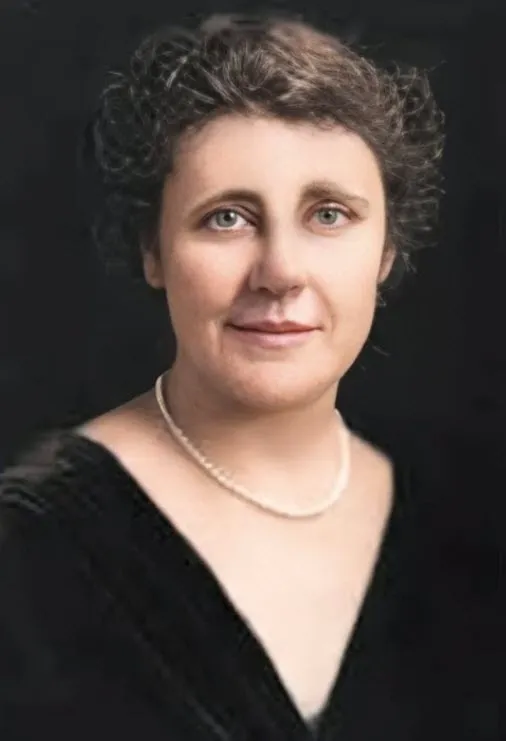
In search of relief, Martha turned to Dr. Perrin Thacher Wilson, a distinguished Boston doctor of osteopathy known for his innovative “scientific adjustment” techniques. Dr. Wilson’s approach was grounded in the principles of osteopathy, which emphasizes the body’s ability to heal itself through manual manipulation of the musculoskeletal system. For Martha, this approach proved to be transformative.
Under Dr. Wilson’s care, Martha experienced remarkable improvement in her shoulder condition. The “scientific adjustment” technique not only alleviated her pain but also restored her shoulder’s functionality, enabling her to resume her beloved piano playing with renewed vigor and passion. Martha’s gratitude and loyalty to Dr. Wilson as her healthcare provider grew profoundly, establishing a lasting professional and personal relationship.
Influence on John D. Rockefeller Jr.
Martha Baird Rockefeller’s positive experience with osteopathy under Dr. Wilson’s care did not go unnoticed by her second husband, John D. Rockefeller Jr. Recognizing the efficacy of osteopathic treatment firsthand through Martha’s recovery, Rockefeller Jr. decided to seek Dr. Wilson’s care himself, further solidifying the family’s endorsement of osteopathic medicine.
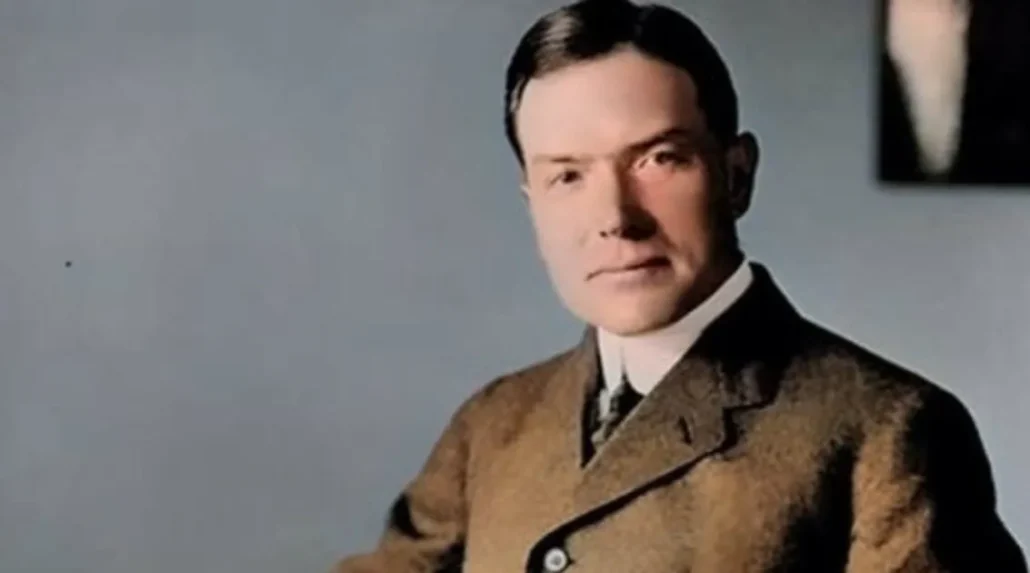
Rockefeller Jr.’s involvement in osteopathy extended beyond personal health benefits. It inspired him to support the field philanthropically, aligning with the Rockefeller family’s broader legacy of promoting innovative healthcare solutions. This support would have far-reaching consequences for the field of osteopathy in the United States.
Philanthropic Contributions to Osteopathy
The 1960 Time Magazine article not only highlighted Martha Baird Rockefeller’s personal journey with osteopathy but also underscored the family’s significant philanthropic contributions to the field. In response to their positive experiences with osteopathy and in recognition of Dr. Wilson’s contributions to the field, Martha Baird Rockefeller decided to honor Dr. Wilson with a significant donation.
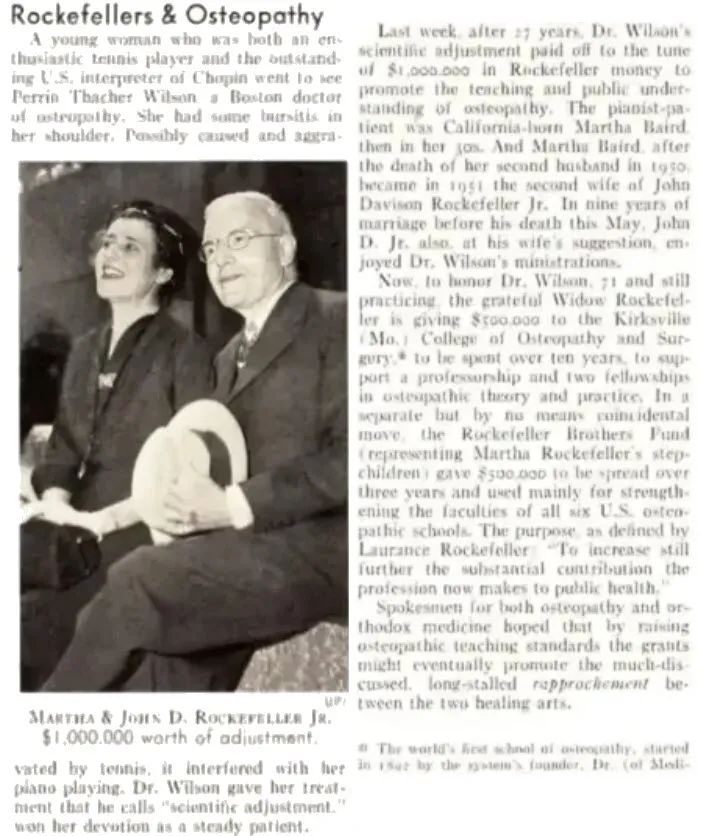
Martha and John Rockefeller: A $1,000,000 Commitment to Osteopathy
This newspaper clipping captures Martha and John Rockefeller smiling together, highlighting their generous $1,000,000 donation to the field of osteopathy. Their contribution significantly bolstered osteopathic research and education, reflecting their dedication to advancing innovative medical practices and improving healthcare outcomes.
In 1960, Martha donated $500,000 to the Kirksville College of Osteopathy and Surgery. This generous contribution supported a professorship and two fellowships in osteopathic theory and practice over ten years. The donation aimed to enhance osteopathic education and research, ensuring that future generations of osteopathic physicians would receive the necessary training and support to continue advancing the field.
TIME MAGAZINE
Medicine: Rockefellers & Osteopathy
JULY 11, 1960
A young woman, both an avid tennis player and a distinguished U.S. interpreter of Chopin, visited Dr. Perrin Thacher Wilson, a Boston osteopath, due to bursitis in her shoulder. The condition, likely exacerbated by tennis, affected her piano playing. Dr. Wilson treated her with his “scientific adjustment,” earning her loyalty as a regular patient.
Years later, Dr. Wilson’s treatment led to a significant financial boost for osteopathy. The woman was Martha Baird, a California-born pianist in her 30s. Following the death of her second husband in 1950, she married John Davison Rockefeller Jr. in 1951. During their nine-year marriage until John D. Jr.’s death in May, he also benefited from Dr. Wilson’s treatments at Martha’s suggestion.
In recognition of Dr. Wilson’s care, Martha Rockefeller, now a widow, donated $500,000 to Kirksville College of Osteopathy and Surgery, the first osteopathic school established in 1892 by Dr. Andrew Taylor Still. The funds, spread over ten years, aim to support a professorship and two fellowships in osteopathic theory and practice. Additionally, the Rockefeller Brothers Fund, representing her stepchildren, contributed $500,000 over three years to enhance the faculties of all six U.S. osteopathic schools. Laurance Rockefeller emphasized that these grants intend to advance the substantial contributions of osteopathy to public health and potentially foster a rapprochement between osteopathy and orthodox medicine through improved teaching standards.
Simultaneously, the Rockefeller Brothers Fund, representing Martha’s stepchildren, contributed an additional $500,000 to strengthen the faculties of all six U.S. osteopathic schools. This combined philanthropic effort was a testament to the Rockefeller family’s commitment to advancing osteopathic medicine and its integration into the broader American healthcare system.
The book Titan: The Life of John D. Rockefeller, Sr., written by Ron Chernow
John D. Rockefeller, Sr. experienced a profound transformation in his health and productivity thanks to his adoption of osteopathy in the early 1900s, as detailed in Ron Chernow’s biography, Titan: The Life of John D. Rockefeller, Sr. Initially attracted to methods such as massage, Rockefeller became an ardent supporter of osteopathy, a discipline focused on improving the body’s structural integrity through the manipulation of the skeleton and muscles. This newfound devotion stemmed from his belief that osteopathy not only restored his health but also significantly enhanced his efficiency and endurance. In 1905, Rockefeller expressed his gratitude for osteopathy, attributing it to his increased capacity to manage a workload that had previously seemed insurmountable.
Rockefeller’s endorsement of osteopathy went beyond his personal experience; he actively supported the profession despite challenges posed by traditional medical circles, ironically funded in part by his own philanthropy. When legislation threatened to restrict osteopathic practice, Rockefeller intervened, asking his associates to assist osteopaths in their time of need. His commitment extended beyond his personal health, demonstrating his belief in the effectiveness of alternative medical practices.
An anecdote illustrates Rockefeller’s spirit and appreciation for osteopathy: during a treatment session where his vertebrae were adjusted, he humorously remarked on his inability to “oil his own joints,” despite his control over the vast oil resources of the country. This joke highlighted both his self-awareness and the profound impact of osteopathy on his physical well-being.
In summary, Rockefeller’s adoption of osteopathy was not merely a health practice; it was a testament to its positive impact on his life and work, as recounted in Ron Chernow’s biography. His advocacy for osteopathy reflected his progressive spirit and willingness to challenge established medical norms for the sake of his personal health and the broader societal benefit.
Impact on Osteopathic Medicine
The Time Magazine article and the subsequent philanthropic contributions from the Rockefeller family had a profound impact on osteopathic medicine in the United States. Martha Baird Rockefeller’s endorsement of Dr. Wilson’s treatments and her generous donations to osteopathic education helped to elevate the status of osteopathy within the medical community.
The Rockefeller family’s financial support provided crucial resources for osteopathic colleges and hospitals across the country, enabling them to grow and expand their educational programs. This support was instrumental in securing osteopathy’s legal recognition as a legitimate medical profession in many states, paving the way for osteopathic physicians to obtain licensure and practice medicine independently.
Moreover, the Rockefeller family’s commitment to supporting research in osteopathic medicine enhanced the field’s scientific credibility. By funding studies that explored the efficacy of osteopathic techniques and treatments, the Rockefellers contributed to the growing body of evidence supporting osteopathy’s effectiveness in treating a wide range of conditions.
Long-Term Legacy
The legacy of the 1960 Time Magazine article and the Rockefeller family’s support for osteopathy continues to reverberate in the landscape of American healthcare today. Osteopathic medicine has evolved significantly since Martha Baird Rockefeller’s endorsement and philanthropic gestures. Osteopathic physicians (DOs) are now fully licensed and trained healthcare professionals who practice in all medical specialties, from primary care to surgery.
The holistic approach championed by osteopathy, which emphasizes the interconnectedness of the body’s systems and the importance of preventive care, continues to resonate with patients seeking comprehensive and integrative healthcare. Osteopathic manipulative treatment (OMT) remains a valuable complement to traditional medical therapies, offering patients a unique approach that addresses the whole person—mind, body, and spirit.
International Influence
Rockefeller’s support had a significant international influence on the perception and adoption of osteopathy. In the late 19th and early 20th centuries, John D. Rockefeller, through the philanthropic arm of the Rockefeller Foundation, supported the growth and development of osteopathic medicine. This support extended beyond the United States, impacting the global perception and adoption of osteopathy in several ways:
List of impacts
- Financial Support and Infrastructure Development: Rockefeller’s funding provided financial stability to osteopathic institutions and helped establish new schools of osteopathy. This financial backing was crucial in the early days of osteopathy, ensuring that it could grow and compete with conventional medical schools.
- Legitimacy and Recognition: By supporting osteopathic schools and hospitals, Rockefeller’s endorsement lent legitimacy to the practice of osteopathy. This was particularly important in gaining recognition from mainstream medical communities and regulatory bodies both in the United States and abroad.
- International Expansion of Osteopathic Education: The Rockefeller Foundation’s support facilitated the establishment of osteopathic schools not only in the United States but also in other parts of the world. This helped spread the teaching and practice of osteopathy beyond its American origins, influencing medical education globally.
- Public Perception: Rockefeller’s support contributed to improving the public perception of osteopathy as a legitimate and effective form of medical treatment. This helped to overcome skepticism and resistance from traditional medical practitioners and the general public.
- Research and Development: The funding provided by Rockefeller allowed for research into osteopathic techniques and principles, further enhancing the evidence base and credibility of osteopathy as a medical discipline.
- Establishment of International Osteopathic Schools: The Rockefeller Foundation’s funding facilitated the establishment of osteopathic schools outside of the United States, such as in Europe and Asia, thereby spreading osteopathic education and practice globally.
- Training of Osteopathic Physicians: Funding supported scholarships and training programs for international students to study osteopathy in the United States, bringing back knowledge and skills to their home countries.
- Support for Osteopathic Hospitals: The Rockefeller Foundation provided grants to establish osteopathic hospitals and clinics in various countries, demonstrating the effectiveness of osteopathic treatment and fostering patient trust.
- Promotion of Public Health Initiatives: The Foundation supported public health campaigns and initiatives that included osteopathic principles and treatments, emphasizing preventive care and holistic health approaches.
- Integration into Global Health Systems: Through partnerships with local governments and health organizations, the Foundation promoted the integration of osteopathic practices into mainstream healthcare systems, enhancing accessibility and acceptance.
- Research and Development: Funding supported osteopathic research initiatives globally, leading to the publication of studies that validated the efficacy of osteopathic techniques and treatments.
- Cultural Exchange and Collaboration: The Rockefeller Foundation facilitated cultural exchanges and collaborations between American and international osteopathic practitioners, promoting knowledge sharing and professional development.
- Advocacy and Policy Development: The Foundation supported advocacy efforts to influence healthcare policies in various countries, advocating for the recognition and regulation of osteopathy as a distinct healthcare profession.
- Public Awareness Campaigns: Funding enabled the creation of public awareness campaigns about osteopathy in different languages and cultural contexts, educating communities about its benefits and promoting patient choice.
- Humanitarian Outreach: The Foundation supported osteopathic medical missions and humanitarian efforts in underserved regions, providing healthcare services and training local practitioners in osteopathic techniques.
- Standardization of Osteopathic Education: The Foundation supported efforts to standardize osteopathic education globally, ensuring consistent quality and curriculum across different countries.
- Creation of Osteopathic Research Institutes: Funding enabled the establishment of osteopathic research institutes in various countries, promoting scientific research and evidence-based practice.
- Translation of Osteopathic Texts: The Foundation supported the translation of key osteopathic textbooks and literature into different languages, making osteopathic knowledge more accessible worldwide.
- Support for Continuing Education: Grants were provided for international osteopathic practitioners to attend conferences, workshops, and seminars, fostering ongoing professional development.
- Collaboration with Traditional Medicine: The Foundation facilitated collaborations between osteopathic practitioners and traditional medicine practitioners, promoting integrative healthcare approaches.
- Advancement of Osteopathic Techniques: Funding supported the development and refinement of osteopathic techniques tailored to address regional health issues and cultural contexts.
- Inclusion in Global Health Initiatives: The Foundation advocated for the inclusion of osteopathic medicine in global health initiatives and agendas, promoting its role in achieving health equity and universal health coverage.
- Dissemination of Best Practices: The Foundation supported the dissemination of best practices in osteopathic care through publications, workshops, and mentorship programs.
- Support for Osteopathic Associations: Grants were provided to strengthen osteopathic professional associations and networks globally, promoting collaboration and knowledge exchange.
- Public Policy Influence: The Foundation supported efforts to influence public policies related to healthcare and education, advocating for the recognition and integration of osteopathy into national health systems.
Overall, Rockefeller’s support played a pivotal role in shaping the international perception and adoption of osteopathy, helping it to establish itself as a recognized and respected field of medicine across the globe.
The Future of Osteopathy and Integrative Medicine
As we look to the future, the influence of John D. Rockefeller and his family on osteopathic medicine remains profound. Osteopathy continues to grow in popularity and acceptance, offering patients a unique and effective approach to healthcare. The integration of osteopathic principles into mainstream medical practice reflects a broader trend towards integrative medicine—a holistic approach that combines traditional and complementary therapies to improve patient outcomes and quality of life.
The future of osteopathy lies in continued research, education, and advocacy. With ongoing support from philanthropic organizations, medical institutions,
Conclusion
In summary, John D. Rockefeller’s visionary support for osteopathy has left an indelible mark on the landscape of healthcare, both in the United States and globally. Through the philanthropic arm of the Rockefeller Foundation, Rockefeller’s commitment to improving medical care and expanding access to alternative therapies has shaped the development and acceptance of osteopathy in profound ways.
Rockefeller’s initial encounter with osteopathy sparked his interest and led to significant financial support for the establishment of osteopathic schools and hospitals. This support not only provided the necessary infrastructure for osteopathic education and practice but also helped secure legal recognition and professional legitimacy for osteopathic physicians. As a result, osteopathy transitioned from a fringe practice to an integral part of mainstream healthcare, offering patients a holistic and effective approach to medical treatment.
The Rockefeller Foundation’s funding also facilitated research and scientific validation of osteopathic principles and techniques, contributing to the evidence base that supports its efficacy. Moreover, Rockefeller’s influence extended beyond the United States, influencing the global adoption and integration of osteopathy into healthcare systems in Europe, Asia, and beyond.
Looking forward, Rockefeller’s legacy in osteopathy continues to be felt. The foundation he laid has supported generations of osteopathic physicians who continue to advance the field through research, education, and clinical practice. Osteopathy has proven its value in modern healthcare, offering patients personalized care that addresses the root causes of illness and promotes overall well-being.
In conclusion, Rockefeller’s philanthropic contributions to osteopathy have had a lasting impact on healthcare worldwide. His vision and support have not only elevated osteopathy as a legitimate medical discipline but have also paved the way for integrative medicine approaches that prioritize patient-centered care. As we look to the future, the principles and practices championed by Rockefeller continue to guide the evolution of osteopathy, ensuring its place as a vital component of global healthcare.
Rockefeller’s legacy serves as a testament to the power of philanthropy in advancing medical knowledge and improving public health. By supporting innovative and alternative medical practices like osteopathy, Rockefeller has left a legacy that continues to inspire and shape healthcare policies and practices around the world.

